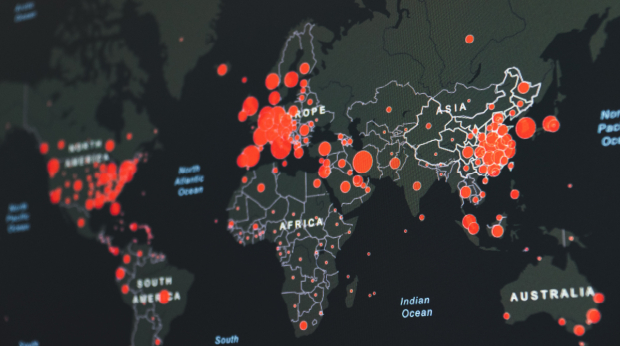The article is also available in French and Spanish. It is originally published in the public group Digitalisation 4 Development.
The EU – the world’s leading development donor – builds its digitalisation1 agenda on the successful work of development practitioners. The introduction and implementation of the EU’s Global Gateway strategy for international partnerships presents a whole new set of opportunities for all involved. It harnesses the development community’s incredibly valuable skills of navigating different regulatory frameworks and business environments to significantly boost international partnerships. Under The Global Gateway – the EU’s landmark policy – digital connectivity takes centre stage in the investment strategy designed to foster value-based sustainable development for partner countries. Standing as an all-inclusive addition to the Paris Agreement, the SDGs, The Green Deal and Agenda 2030 initiatives, The Global Gateway reinforces the EU’s commitment to generating steady, long-term development with high intrinsic value for its partners. Priority will be given to investments that promote smart, ethical, green, clean, sustainable and secure infrastructures that catalyse global economic growth.
|
Lessons learnt on prioritising digital connectivity to maximise impact, based on a training organised by the MKS2 programme and country data:
|
A green data centre-also known as a sustainable data centre - doesn’t have outdated systems and makes use of newer, more efficient energy-saving technologies to carry data flow. There has been a huge increase in data centre power consumption, driven by governmental action and increased public awareness, exponential growth and use of the Internet.
Added pressure has been placed on businesses to pursue a green policy to offset the environmental impact, higher energy costs. As a result, the development of environmentally and economically sustainable data centres has become critical.
2. Intelligent Infrastructure Design
Sharing of telecom infrastructure among providers is on the rise in the telecom industry, where competitors are becoming partners to minimise their expanding investments due to the communications industry's economy of scale property. As a result, it is vital to build a culture of infrastructure. Depending on the regulatory and competitive context in each country, the degree and method of infrastructure sharing may differ and is largely influenced by the extent of digital connectivity in partner countries3. For intelligent infrastructure design to be efficient in partner countries, a consensus must be reached – from reducing costs, the access to rights of way, settling disputes and coordination among public authorities. Naturally, regulation emerges as a by-product of sustaining a consistent policy application across a country4. While infrastructure sharing agreements are still relatively slow, they remain the preferred EU policy to help accelerate investment in next-generation networks. There are clear provisions in the EU’s Green Deal to ensure that partner countries benefit from the EU’s growth policy to become the first climate-neutral continent by 2050.
The term "digital divide" is used to describe the disparities in access to and the use of information and communication technologies (ICTs), particularly the gaps in access to and usage of Internet-based digital services. Geographical location (e.g. urban and rural), gender, age, skill level, company size, and in general, different vulnerable groups in society can all contribute to digital divides. The expression "connectivity divide" refers to disparities in access to and uptake of high-quality broadband services at affordable rates in low-density areas and for disadvantaged groups compared to the general population. All these factors increase the valid growing concerns that new technologies will disrupt entire businesses, widen existing income inequalities and lead to a further concentration of power and wealth.

The world’s offline population faces constraints including literacy, affordability, gender, income inequality and accessibility, while the supply side grapples with demands for availability, lower regulatory costs and lower Returns-On-Investment (ROI) while cruising through state policy filters. Still the EU is up to the challenge of helping develop partner countries’ weak ICT industries and service sectors into world-class powerhouses. That is why the EU’s winning formula for rolling out digital connectivity to partner countries merges service provision, international competitiveness, portability, infrastructure/site co-sharing and licensing framework. Since ICT regulation has evolved at a much slower pace than digital technologies, digital connectivity presents a major challenge to governments ‘traditional’ regulatory ways. Accordingly, the EU Digital Compass encourages less sector-specific protocols to the benefit of all-encompassing policies of inclusiveness, innovation, job creation, growth, energy and environmental issues aligned with international standards.
Opportunities and challenges
While the exponential distribution and scale-up of digital technologies and services has major global repercussions, it brings new dangers and difficulties while equally generating opportunities for sustainable development and inclusive prosperity.
As digital technologies evolve, solutions will be found to the current connectivity hazards including fairness and bias, fake news and fears around Artificial Intelligence, state control, privacy, mass surveillance and other scourges that threaten to harm the stability of our democracies.
Yet the benefits of digital connectivity exceed the pitfalls and are visible through the impact on GDP, enhanced productivity, innovation, opportunities in key economic sectors and public services and as a social and economic driver. Standing at the cutting edge of technology and social change, the EU champions a digital future where the development of trustworthy technology fosters an open and democratic prosperous society.
Like, comment and share this article with your peers
1 https://europa.eu/capacity4dev/results-and-indicators/digitalisation&nb…;
2 The training was organised between 19-27 April 2022 and delivered by INTPA Unit F5 (Science, Technology, Innovation & Digitalisation) under the framework of the Methodological and Knowledge Sharing Support for EU External Interventions (MKS) programme, managed by INTPA Unit D4.
3 Studies have determined that proper infrastructure-sharing policies, environmental compliance and efficiency targets allow a saving of between 20% and 30% of infrastructure deployment costs. Examples of low-impact infrastructure include, subsea optical cables, trenching – technical recommendations for minimising the impact of micro-trench construction on the environment – cloud computing and green data centres among many other instruments.
4 One successful case study from Brazil brings evidence of such community effort. In 2020, a grassroots-led Brazilian initiative towards local authorities and legislative bodies challenged the outdated, or in some cases inexistant, legal and regulatory constraints that hindered the distribution and density of antennas across the nation's 5,565 municipalities. This opportunity has resulted in a decree called Lei das Antennas (Antenna Law) that sets among other directives, incentives to infrastructure deployment, a constructive grant and the overall system governance. It establishes the general rules for implementation and sharing of telecommunications infrastructure nationwide, making it easier for the deployment of mobile infrastructure.





Log in with your EU Login account to post or comment on the platform.